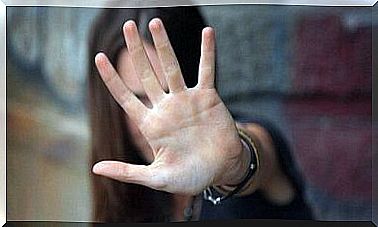How To Easily Measure A Heart Rate

Measuring a heart rate is a very useful procedure that allows you to find out what your heart rate is. In addition, it can help you better understand if your heart rate is regular. It is a very simple way to get more information about your cardiovascular function.
The pulse refers to a series of pulsations that can be felt in some parts of the body. This is due to both contraction and dilatation movements in both the heart and the arteries.
The pulse is synonymous with the heart rhythm and is usually expressed in beats per minute. For example, if you measure a person’s heart rate for 60 seconds and you count 70 beats, it means that the heart beats 70 times in one minute.
Although measuring your heart rate is an important procedure for quickly diagnosing a possible heart problem, many do not know what it is or how to do it. Therefore, you will learn all about the heart rhythm and how to measure your heart rate in the following article.
What is the purpose of measuring a heart rate?

Measuring your heart rate has many uses as it informs you about the number of beats your heart is performing per. unit time (usually per minute). A normal heart rate is between 60 and 100 beats per second. minute.
First, measuring your heart rate can help you detect tachycardia or bradycardia . Tachycardia is when the heart beats faster than 100 beats per second. minute. Bradycardia, on the other hand, is when the heart beats below 60 beats per second. minute.
Both tachycardia and bradycardia can indicate that something is not working properly in your cardiovascular system. Exceeding any of these limits can mean some risk to our hearts.
Also read: Electrocardiogram or ECG: Seven Steps to Interpreting It
However, most of the time, these are normal situations that the heart has to adapt to in order to maintain the blood supply to all the organs and tissues in the body.
For example, while exercising, it is perfectly normal to measure your heart rate and discover that you are in tachycardia. The heart may even suffer from tachycardia in situations of fear, high stress or danger. Similarly, people who exercise daily have a lower resting heart rate.
Some athletes may have a resting heart rate that is as slow as 40 beats per second. minute without any signs of disease or syndrome.
So why should you measure your heart rate?
First of all, this information can make you think that it can be helpful to take your heart rate to check your physical condition and progress when you exercise. Second, you will also pay more attention to the limits you face during a workout.
Also, do not forget that taking your heart rate can help you reach an early diagnosis of any disease you may be subconsciously suffering from.
This is e.g. the case in some severe and more extreme situations, such as an aortic rupture. The simple act of measuring your heart rate can actually help you detect it in time. It can even save your life.
How do you learn to measure a heart rate?

To measure your heart rate under normal conditions, you should ideally be calm and relaxed without having trained before. This way you can find your resting heart rate.
You can perform this procedure on different parts of the body, but the common way is to measure your heart rate on your neck or wrist. In fact, once you start measuring your heart rate, it is best to do it on your neck. There you can feel the strongest.
Also read: The causes of common carotid artery strain
First of all, you need a stopwatch. You can use a watch or your mobile phone. Once you have your stopwatch ready, follow these steps carefully.
- Place your index finger and middle finger under your chin on your neck. You need to press lightly on that area until you feel your heartbeat. However, do not press too hard either, as you may get the wrong result.
- Once you have found your heart rate and you can feel each pulsation clearly, start the stopwatch and start counting. You can keep your fingers there and count strokes for a minute or 30 seconds. If you select the last option, multiply the total number of strokes you have counted by two.
As you have already read, if the result is between 60 and 100 beats at rest, it is within the normal limits. However, if your heartbeat exceeds 100 beats per second. minute, or you notice irregularities in the rhythm, contact a doctor as soon as possible.
Finally
Measuring your heart rate is a very simple procedure that serves many purposes in your daily life. For example, it may help to show that you are working hard enough to raise your heart rate significantly. You can measure your heart rate on your wrist, neck, abdomen, etc.
If you have trouble doing so, you can purchase a heart rate monitor. Do not forget to consult your doctor if you notice any abnormality or if your heart rate is usually above average at rest.









